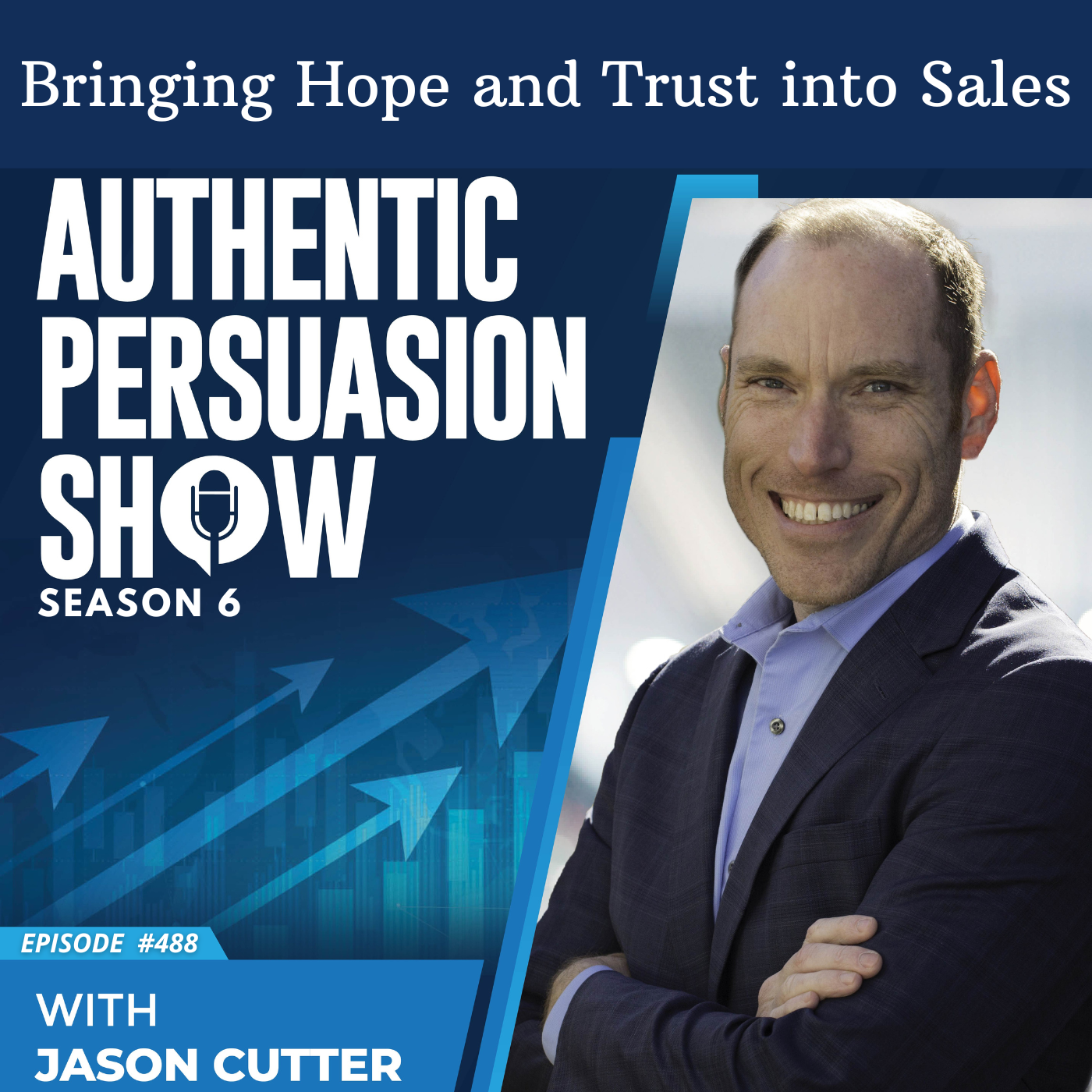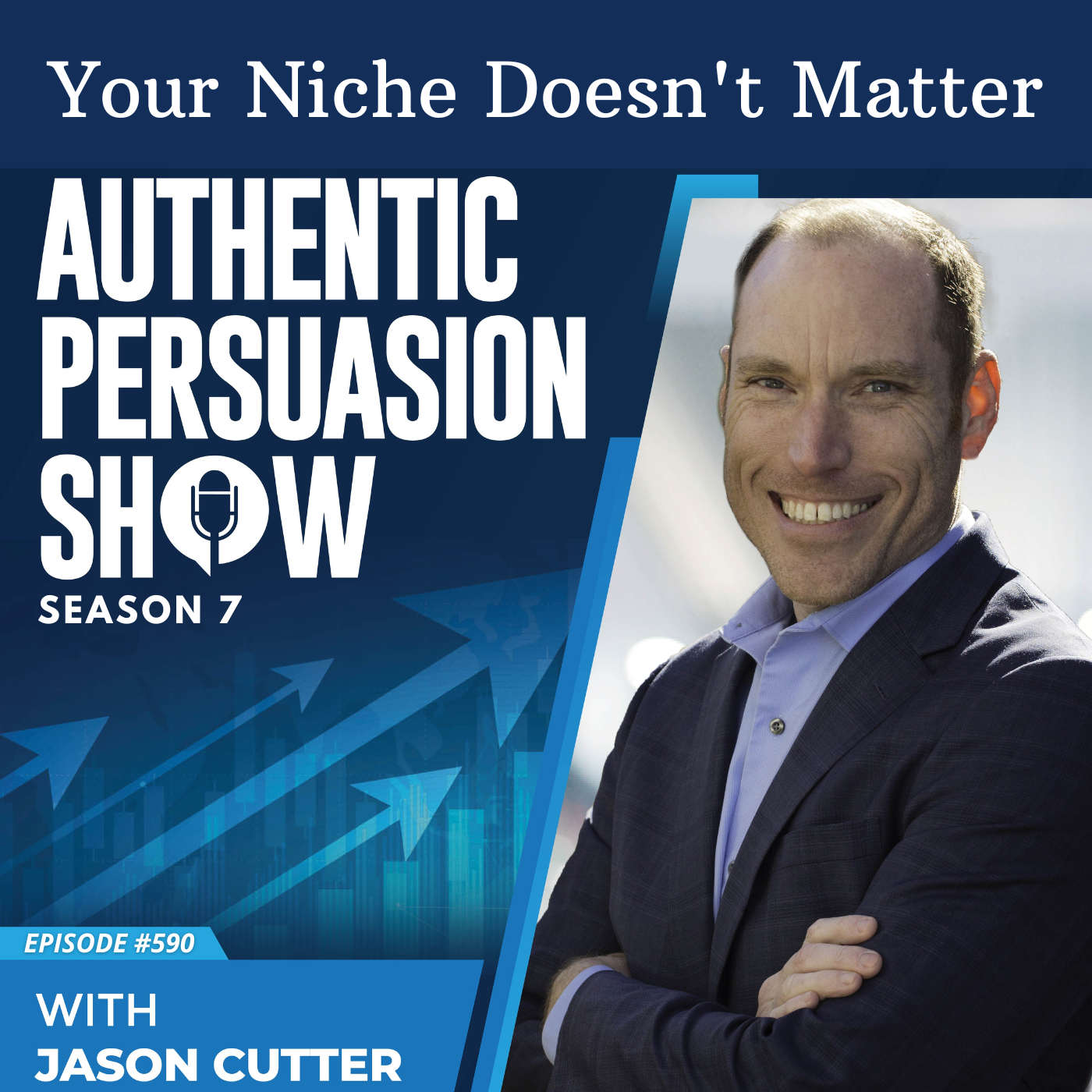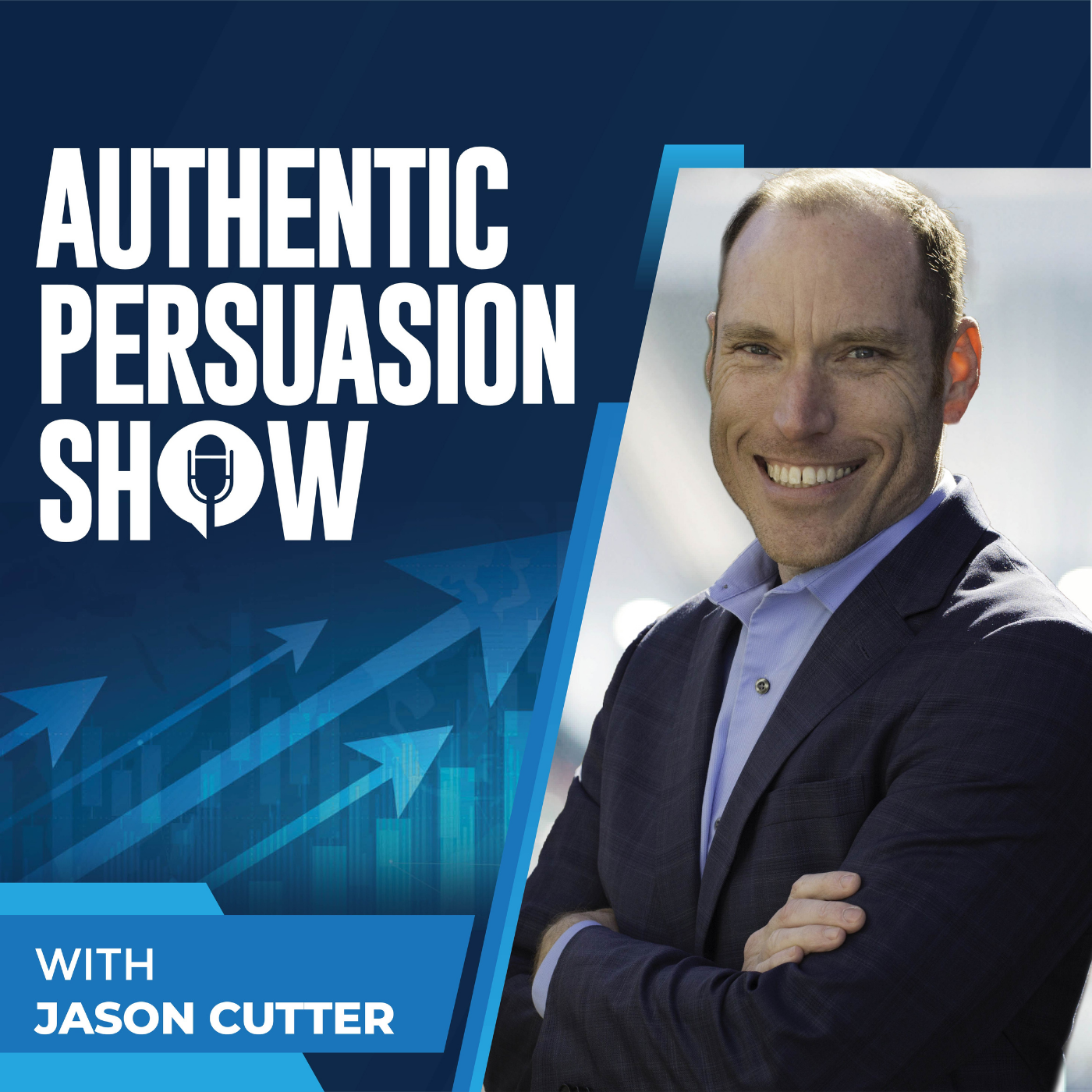Episode Transcript
[00:00:00] Speaker A: Welcome to the authentic Persuasion show. On this episode, I want to replay part of a previous show. Maybe you heard the original full length episode and this could be a great refresher and reminder. Or maybe this is your first time hearing this content and the timing could be just right to help you leverage authentic persuasion today in your role, no matter what. Here's to your success.
[00:00:21] Speaker B: This is the authentic persuasion show and change is very scary. Best way to do that is two processes, two things to keep in mind. One is the consultative approach and close. And the other one is the assumptive approach and close. All right, so let's talk about the consultant consultative close consultation. Close. Right. This one. There's a lot of people who use this term, but I think this is super important. And it's not the same thing as using as a close is using as a process. So a consultative process is when you're asking questions, when you're going through the discovery mode to try to see what it is that somebody has a problem with or what they have a goal for.
[00:01:06] Speaker A: Right.
[00:01:07] Speaker B: Because it's not always about getting out of pain or avoiding pain. Sometimes it's actually achieving something better. There's a lot of people who focus on, okay, let's always find the pain and then let's make the pain worse, and then let's motivate them to get out of pain. And that is a negative way to go when selling every single time. Because not everyone you deal with is going to be trying to avoid pain. Some of them might be wanting to achieve more or achieve a goal. Even if you're selling the same thing to the same types of people, everyone's going to be different. And so when you only focus on pain, you're only focusing on negativity. And that can drive some prospects away from you because. Because it'll feel like you're trying to use manipulation to make basically fear mongering, which is not a great strategy. I remember studying David Sandler training early on, and it was about finding that pain, make that pain so unbearable in their mind that they beg for a solution. And that might work with some people in some situations if they have a pain that that works. Otherwise that's going to feel gross, it's going to feel pushy, and it's going to be, again, feel like fear mongering. And that's going to turn off a lot of people. And if they do sign up with you or buy from you under that fear and that pain and that umbrella of just focusing on that, when that wears off, when a couple of hours or a couple of days, weeks, months after that conversation ends, they realize, wait a second. Like, I didn't like that experience. And so it doesn't always produce long term results. Really ideal clients consultative approach is looking at that, is looking at what is their pain or what is their goal? Where do they want to be? What is an ideal situation? What is the better place that they want to be at in their life? Again, avoiding pain or achieving a goal? What do they want? How could they potentially get there? And then this is the second part to the consultative approach, which is, do I have a solution that can help them? And that's the big thing, because when salespeople don't take a consultative approach, what they're doing is they're basically saying, one size fits all. I don't care what your problem is. I don't care what your goal is. I sell this thing to everybody who's in this position or in this role or has a pulse. I don't care. I'm just going to sell it to you. And obviously, that's what people dislike about sales. It doesn't feel customized, doesn't feel personal. Uh, it's what I talked about when I talked about the hope step a couple of sessions ago, where that part of the process is all about making about them. You have this problem or this goal. Your square peg. I have a square peg solution. Right, the square peg hole. Here we go. And I'm going to help you. And so the consultative approach is understanding who you are, what you have, what you want, where you're going, where you'd like to be, and then do I have a solution? If I don't, what can I point you to instead? And the power of saying no, which I covered before, and it's in the book, which is really important from a mindset, strategy, strategy standpoint, which is, if I can help you, great. If I can't help you, I'll let you know. That's the consultative approach. When you're using it as a close, then it's about, I am the expert. I am the one who can move you forward. Now, a lot of times, people think they're the same thing. I see people use a consultative approach and still end up like an order taker, because what happens is they say, you have this issue, I have this solution. Thats great. And then they just leave it there, hoping the person says, oh, that sounds perfect. I would like what youre selling, or theyre asking for the sale. So theyre doing the consultative approach, but not just closing it and going all the way, which is the second part, which is that assumptive close. So keep in mind, consultative approach is very important. One big thing that I see a lot, too, is that people think if theyre not a consultant like myself, or they think theyre not in a high end, high ticket sales role or theyre not selling something thats really high ticket, that the consultative sales approach doesnt apply to them. And I would debate that. Everybody should use some type of consultative approach. And again, the backbone of the consultative sales approach and close is that what I have to sell is not for everybody. And my job is to determine if it's for you. And if it is, I'll let you know.
[00:05:38] Speaker A: Right.
[00:05:39] Speaker B: Versus one size fits all versus everyone wins. Right. Like, if I'm selling magazines and I'm going door to door and I knock on a door and you answer, my job is to sell you a magazine. I don't care. I don't care if you want a magazine or not. I have a magazine for everybody on my list, and I don't really care. Like, this isn't about, would you, do you even read magazines? This is about I'm going to get you to buy a magazine and I'm going to try to shove one of these magazine solutions into something that you would like for everyone else. Consultative approach, asking questions, determining, using the authentic persuasion pathway, the rapport, empathy, trust, hope, steps that we've covered so far leading into the fifth one. Spoiler alert. It's urgency. Uh, which we will get to next week, is, um, that's the process you want to take. Now for the assumptive part. A great consultant close, a great consultant mindset. And somebody who sees themselves as a sales professional will use an assumptive close again. Give you an example. Let's go back to the doctor analogy that I was using with the broken arm. Arm is broken. Pins, plates, screws need a cast. Doctor says, here's the diagnosis, here's the prescription. Remember a couple of weeks ago we talked about not committing sales malpractice, which is so important.
Doctor gives the prescription, here's what we've got to do. This is going to hurt. I promise things will get better. We'll see you again in six weeks. We'll give you some pain meds. Any questions before we begin?
That's it. Right? Then begin. Based on the questions, they'll handle their questions. They'll deal with that. There's a lot we can talk about about overcoming objections which will come up in future sessions. Also on that note, I have an ebook that I published. It's on Amazon, on Kindle. But if you want it free, it's called a sales consultant's guide to overcoming objections, yours and theirs, which is always interesting because people come with their own objections as they enter into sales. So it's, it's a very important part that's overlooked by most people in sales. So overcoming objections. If you want that ebook, if you want the PDF, email me or send me a DM. Email me jasonutterconsultinggroup.com dot happy to send it. Just say overcoming objections in the subject and then let me know that's what you want and then I'll reply back. I'll send that to you. Hopefully that helps you close some deals. Or you can send me a DM. No matter where you're watching this, just either put it in comments or send me a direct message and say, Jason, I would love to help overcoming objections and I'll send you that ebook. Just let me know your email where to send it. So the key is that you want to assume that doctor assumes, based on everything that they've gone through, based on you being there in their emergency room, in their exam room, based on what has happened up to that point, and based on the fact that they are a professional, and they have a professional duty and responsibility and an oath that they've taken and certain criteria they're held accountable to, that. If you need help and they can help you, then they assume that they will help you and that you want to move forward, right? They assume you want the surgery. They assume you want the tumor removed. They assume you want your broken arm fixed. That's what they're going to do. A good doctor is just going to assume and move forward and that's what you want to do.
![[754] Consultative vs. Assumptive Close](https://episodes.castos.com/salesexperiencepodcast/images/1744397/c1a-4d8w-7nqw4qzmc2dv-vjlama.png)


